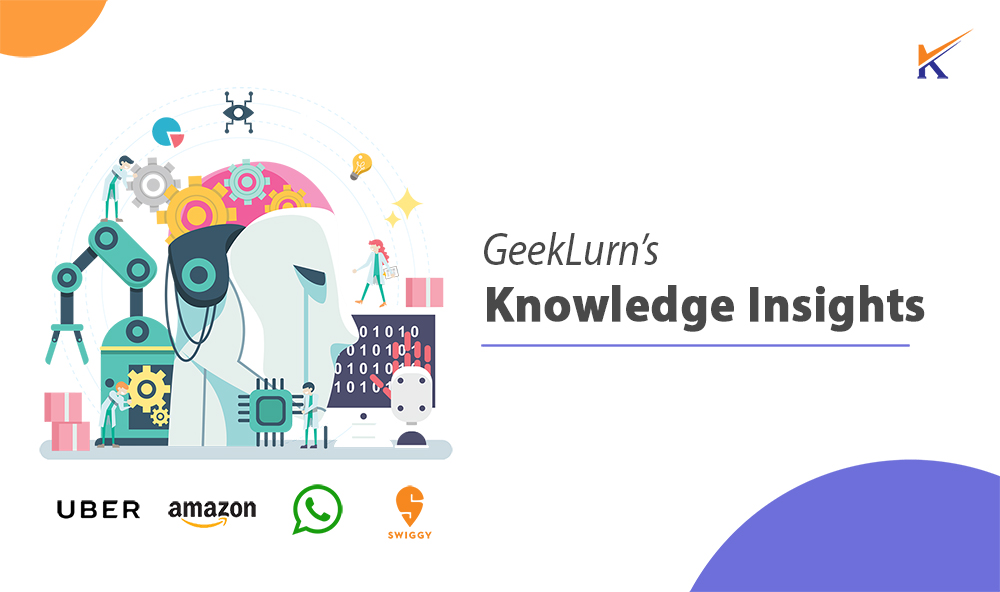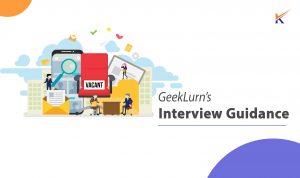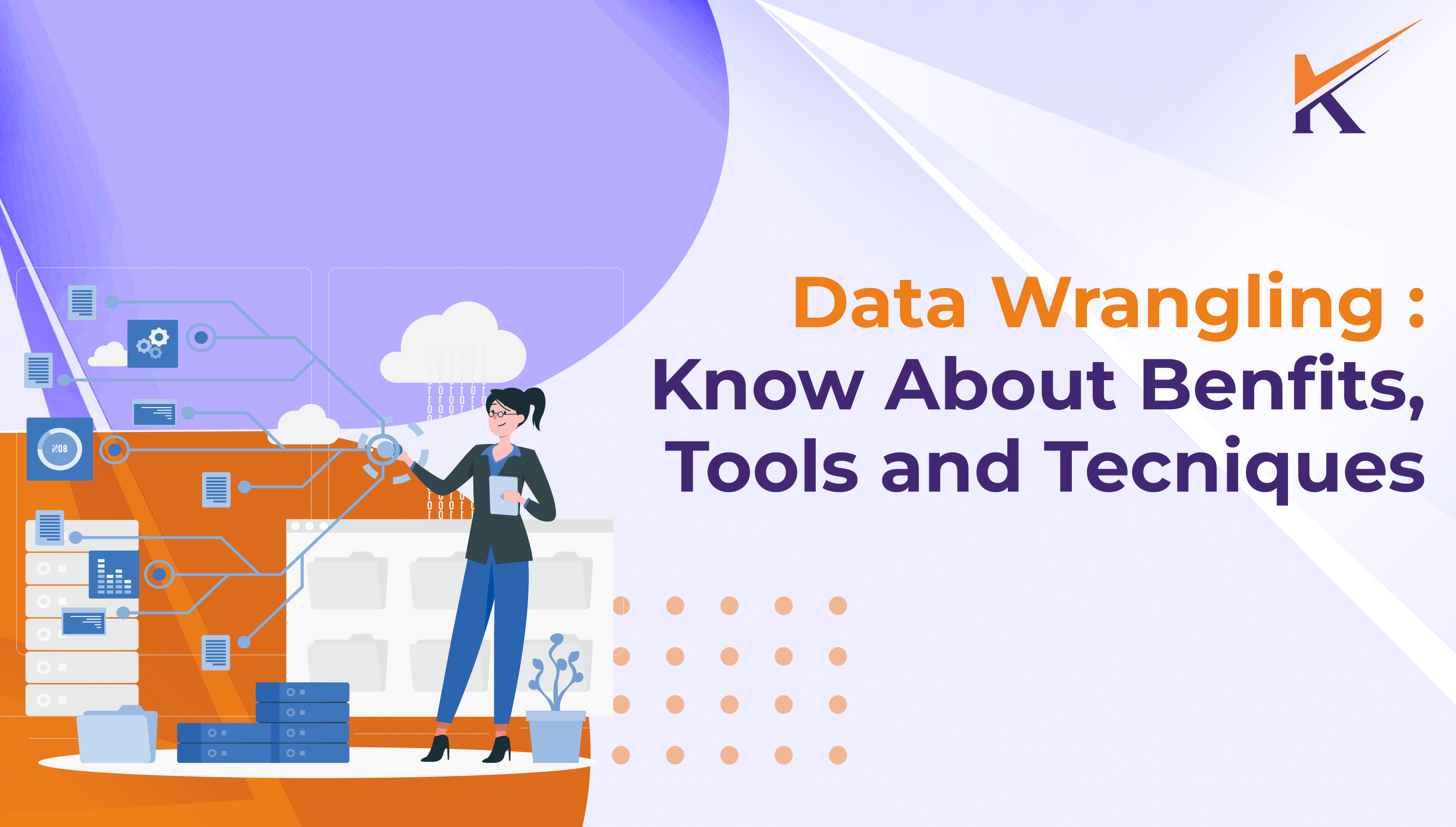Last Updated on: August 25, 2022
You wake up in the morning with a buzz of WhatsApp notification beside your bed, you get ready, snipping the day and getting headed towards the office. Oh, it’s afternoon already! Time to get some food delivered to your cubicle. You open Swiggy, order your favourite food, add it to the cart, proceed to pay through your Mastercard. While working through your working chattel, you feel like your cubicles look shabby, and you need to add some decor garnish. You open Amazon to order a Bonsai plant. By now, you are done for the day and pack up while booking an UBER to get you home. Day in and day out, we realise what we are surrounded with are not apps, but apps camouflaged behind Data.
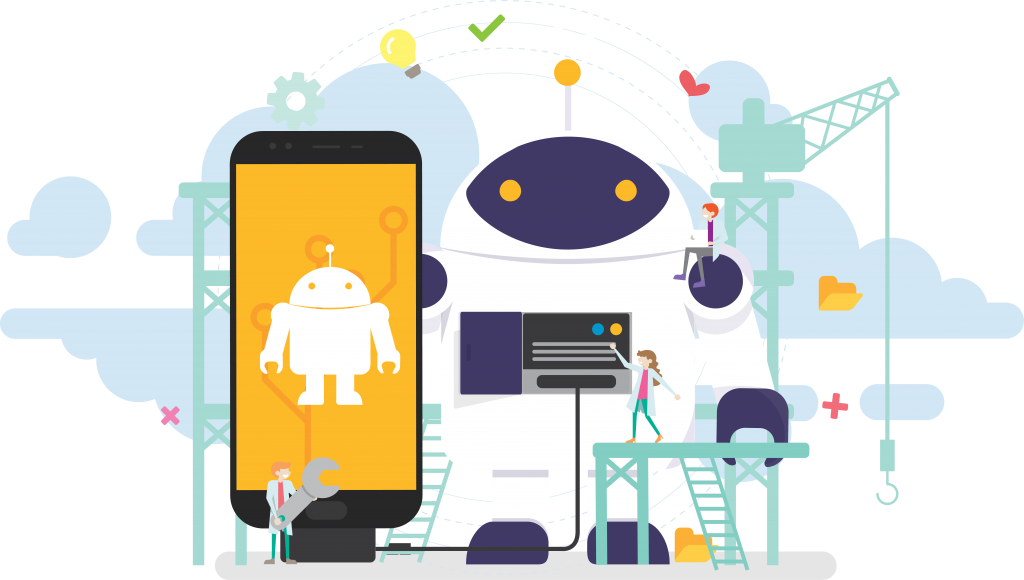
Top Data Science Applications
Data science is being used in various industries, ranging from healthcare to financial services. Data science has helped the medical field to predict side effects of drugs, while helping the logistics industry to develop route-optimisation models. Some major data science applications are:
- Internet Search – The most popular application of data science is by search engines like Google and Bing. These search engines use data science algorithms to provide the best results for our searches and, that too, at supersonic speeds!
- Healthcare – Data sciences has been used to identify and even predict diseases, besides personalising healthcare recommendations through research in genetics and genomics. Widely used in medical image analysis, data science applies machine learning methods, support vector machines, and content-based medical image indexing for better classification. AI-powered apps are becoming popular due to their ability to provide basic healthcare support through chatbots.
- Fraud and Risk Detection – Data scientists play an important role in helping finance companies use massive amounts of data to recover debts and reduce losses.
- Drug Development – Data science applications and machine learning algorithms are being used to simplify and shorten the drug development process. Computer model simulations are being used to predict future outcomes with high accuracy.
- Digital Marketing – The entire digital marketing landscape is dependent on data science algorithms. Advertisements are being pushed by looking at a user’s past behaviour.
- Transportation – Data science apps are being used to optimise shipping and other routes to save time. Airline companies are using it to predict flight delays and drive customer loyalty programs.
- Social Media – Image recognition algorithms are working to improve the user experience on various social media platforms and apps. A strong example is the suggestion to tag friends after you upload your image on social media platforms.
- Gaming – Online gaming experiences are being improved by data science algorithms. Gaming apps and data collected about users are useful in planning the next version and improving the playing experience.
There is a reason why the phrase “Data is the new fuel.” has been added to the Millenials dictionary. It gets the world going. So let’s have a look, how Data gets the world going by explaining the working features of some top apps and their data science version of “behind the scene” functionalities.
Table of Contents
1.Whatsapp:
Let’s break the analysis of WhatsApp in terms of Data Science. Whatever messages you type on the chat window, they come under unstructured data. The very first form known as crude Data.
The next step followed is Data Acquisition. In Data Acquisition, the messages are saved as a text file format which is followed by Pre-text Data processing. In this procedure, The punctuations symbols are removed to save data. All the fonts are normalised into a lower case format. Then tokenisation happens where every text is split into single words. The fourth step goes along the Chat-corpus model. This model map local language to the original language.
Local language- whn, wht,abt,wer {Keys}
Original language- When, What, about, where.{values}
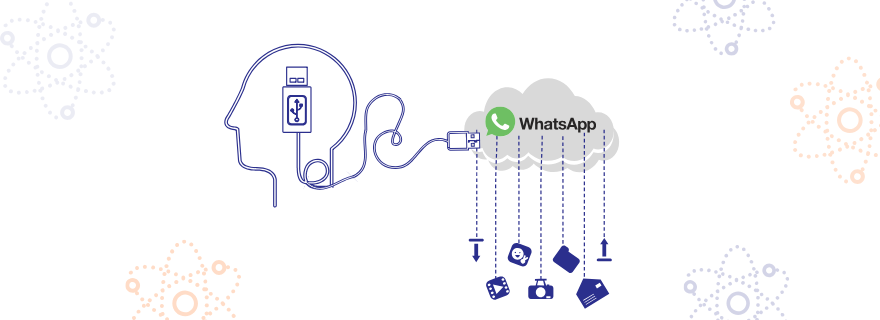
Python’s MapReduce framework carries the fifth step. It maps the information into {key, value} pair and uses the reduction function to sort the list and compress it. After sorting the list, there comes the Data visualisation part. In Data Visualisation, they integrate the split information into the word cloud. Word cloud is a platform to store words. It has a formatted categorisation column, i.e. high frequency and low frequency. The algorithm helps for gathering the most used words in the high-frequency column and least used in the low-frequency column. Using the above information, the auto-suggestion feature is interpreted in Whatsapp or any messaging platform.
2.Swiggy:
The online food delivery custom has swayed the market worldwide with a remarkable margin. A journey from 25 million dollars to 46 million dollars and still growing.
You want your food with just one click, and it’s there at your footstep. Who is making it possible? Swiggy?, Zomato?
No, its Data. There might have been no existence or trace of these businesses without Data. Food delivery companies rely on a Data loop. The Data environment for food delivery companies is formed by nearby restaurants, locations, food menu, grocery store, customer order, GPS, delivery location, reviews blogs, and tweets.
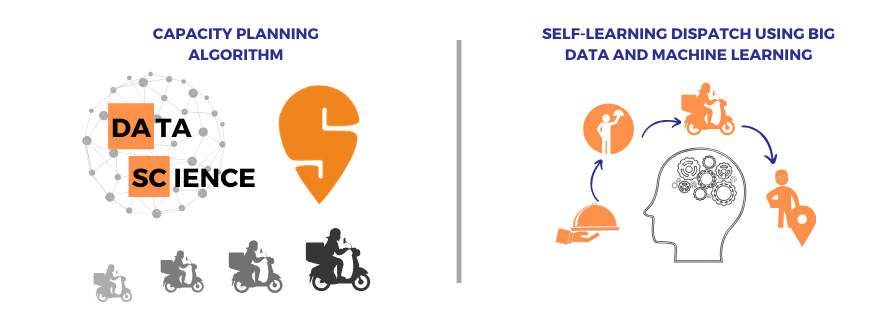
Do you know how few companies deliver your food before the expected time? The secret ingredient is Data. A predictive Data analysis .let them know how many customers are going to order a particular menu from where and at what time. In precise Big Data help them getting their delivery menu in check.
They make use of the Capacity plan algorithm to decide the capacity of driver and vehicles needed for the service. It helps them have an idea about food preparation time analysis. A self-learning dispatch which is a concatenation of machine learning and Big Data helps them to optimise the preparation, pickup and delivery time in hand. Overall data logistic software combing machine and big data keep the business cycle in track to make it efficient, fast and affordable.
3.UBER:
"You might not know where you are, but UBER knows where you are.!"
9 million users, 1.5 billion trips, 160000+ drivers, 450 cities across 66 countries!. UBER is a name that makes the first instinct and image in your mind when you want to reach somewhere. Imagine you have lost your way, or new to the city and are unaware of the typical geography, you don’t know which bus to catch, from where to take an auto, Hold on!. You have your smartphone already, and it is going to pick you up from just the middle of the road.
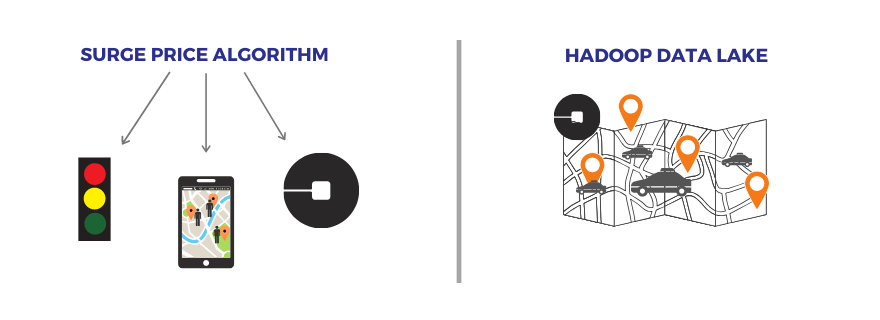
UBER cars are not run by fuel, but Data, yes Big Data. You press the button, set up a location, request a ride and confirm the booking, simple!, but what goes at the backend has a lot to do with Data, in fact, it has got everything to do with Data. UBER uses Hadoop data lake to store data and Apache spark to process it. Data scientists study the pattern of cities and keep on eye on one having a poor public transport system.
Data streaming is helpful and makes use of Hadoop hive platform to track customer’s requests for a car, and their algorithm matches the user with a suitable driver. Why your ride’s price gets doubled, tripled sometimes out of a sudden? The star behind it a surge price algorithm that uses Big Data to customise and optimise traffic patterns, tracking the location of drivers and GPS data and come up with a hybrid algorithm that makes alteration on the basis of time of journey.
It follows a priority list where making the customer available of a ride at the right place and at the right time remains at the top even at the cost of a few bucks more.UBER also uses Python as the go to do tool along with Numpy, Scipy, matplotlib and panda. It uses octave to form prototypes and D3 for Data visualisation.
4.AMAZON:
E-commerce websites are like;
"They definitely know how to mind their business, but they won't let you go unfinished either".
You were scrolling through and clicked on a product midway, and it hits on you thereafter everywhere, no matter where you go! Facebook, Instagram, youtube, Click baits. You are wondering if the internet has become a quick little spy. No, It is not!.
The Big Beautiful Culprit is Data Analytics. It tracks every niche of your click-through machine learning algorithm. They keep an eye on your browsing habits and spending patterns.

How do these business work has something to do with Data extraction where the algorithms try to understand the buyer’s persona. It follows and records a hierarchy to track down prospective client’s journeys. It weaves unique sessions for every user so that when the next time a user revisits the website, it reduces the searching time by showing the visitor items which makes the relevancy and closers to visitor’s interest based on their past browsing history.
Have you seen these websites persuading visitors through content?!. Oh, you are adding a mobile phone to your cart?!, take this screen guard too! Take this phone case too! take these earphones too!. Yes, it is Data segmentation, where the algorithm sets complementary data and information to push to the user’s experience and enhance business functionality and returns.
Use of Data Science in Marketing
Data science can add immense value to any business by helping them improve their marketing and making it more personalised. It can be used for channel optimisation, customer segmentation, real-time interactions, lead targeting, and advanced lead scoring by providing greater insight into the target customer’s preferences and behaviours. Some common strategies based on the use of data science are:
- Customer Segmentation – The application of statistical analysis allows businesses to segment customers based on their purchase patterns or touchpoint engagement. Micro-segmentation techniques are being used to segment customers into precise categories, especially based on their behaviour.
- Real-Time Analytics – Businesses are using real-time algorithms in coordination with customer and operational data to make their marketing campaigns more efficient, quick, and high-performing. Driving business decisions is among the most popular data science applications.
- Predictive Analysis – Businesses are using data to identify which products to introduce first in the market, when to introduce them, and which markets to cater to. Predictive analysis also allows businesses to balance their resources to meet changes in demand.
- Recommendation Engines – These are widely used to provide customers a personalised experience with high satisfaction rates. These engines work by matching the preference of a customer with products whose features may be liked by him/her.
- Lead Scoring – In this marketing strategy, a customer’s journey through the sales channel is filled with various opportunities, options, and choices. The idea is to make the customer choose a product that you want to push and is done after collecting data about the customer’s responsiveness, purchase history, preference, visits, likes, and shares. By offering products to the right people, a business can boost sales.
- Market Basket Analysis – This technique involves learning about the buying patterns and identifying a co-occurrence relationship between different purchases. This aids in predicting future purchase decisions and planning the right marketing message.
The use of data science techniques allows businesses to ensure that their marketing strategies work to maximise profits by choosing the right strategy to market the right product to the right customer.
CONCLUSION:
Why do you need to study Data? Maybe because that’s what gets the world going nowadays. To set the Data free, you need to absorb it, read it, analyse it and feel it. You never know where your inception of studying Data science may land you into! Maybe you will come up with “that big app for which world is still waiting for”.
The day you realise, Data is your cup of tea, you are going to achieve it. To get started, step into Data science and Python courses through learning platforms which are important where they exactly know how to leverage your interest into successful careers in the right direction.


